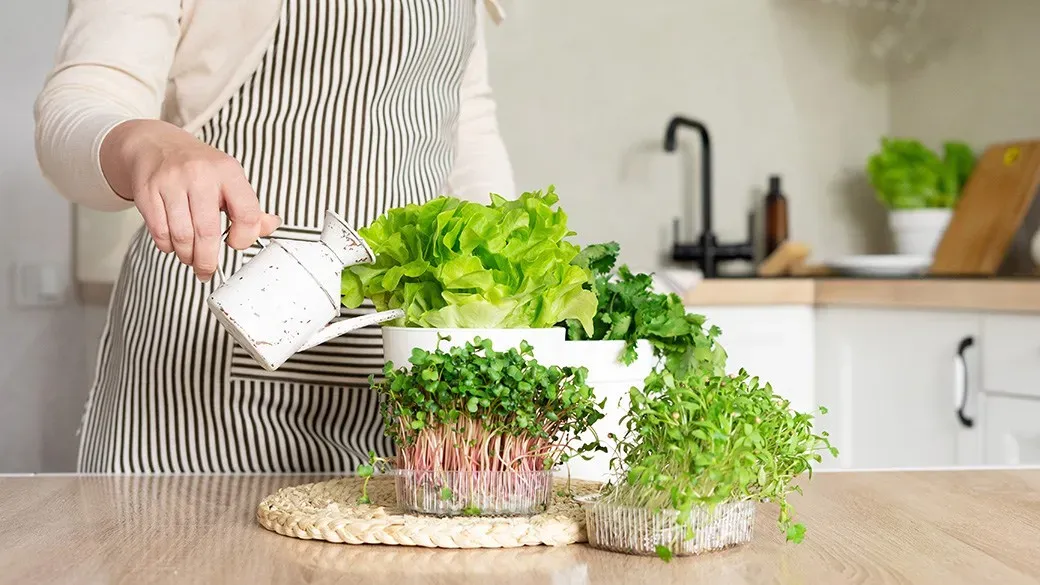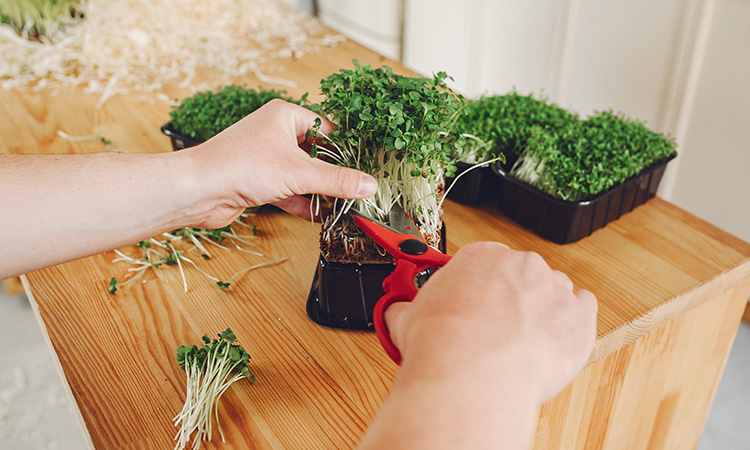Cultivating Indoor Edible Gardens
In this article, we'll explore the essentials of indoor gardening and provide practical tips for growing your own herbs and vegetables indoors.

Introduction

In recent years, the trend of indoor gardening has surged in popularity as more people seek to reconnect with nature and enjoy the satisfaction of growing their own food. Cultivating an indoor edible garden allows you to enjoy fresh herbs and vegetables year-round, regardless of outdoor weather conditions. In this article, we'll explore the essentials of indoor gardening and provide practical tips for growing your own herbs and vegetables indoors.
Choosing the Right Plants
Herbs
Herbs are ideal for indoor gardening due to their compact size and ability to thrive in containers. Popular herbs for indoor cultivation include basil, parsley, cilantro, mint, and rosemary. Choose herbs that you frequently use in your cooking to ensure a bountiful harvest and maximum enjoyment.
Vegetables
While not all vegetables are well-suited for indoor cultivation, there are several varieties that can thrive in indoor environments. Leafy greens such as lettuce, spinach, and kale are excellent choices for indoor vegetable gardens, as are compact varieties of tomatoes, peppers, and cucumbers. Select vegetables that are well-suited to container gardening and require minimal space to grow.
Providing Adequate Light
Natural Light
Most herbs and vegetables require at least six hours of sunlight per day to thrive. Place your indoor garden near a south-facing window where it can receive ample sunlight throughout the day. If natural light is limited, consider supplementing with artificial grow lights to ensure optimal growth and productivity.
Grow Lights
Grow lights are essential for indoor gardening, especially in spaces with limited natural light. LED grow lights are energy-efficient and provide the full spectrum of light needed for healthy plant growth. Position grow lights above your plants and adjust the height as needed to ensure even coverage and prevent stretching.
Selecting Suitable Containers
Containers
Choose containers that are spacious enough to accommodate the root systems of your plants and provide adequate drainage to prevent waterlogging. Opt for containers made of porous materials such as terracotta or ceramic, which allow excess moisture to evaporate and promote healthy root development.
Self-Watering Pots
Self-watering pots are an excellent option for busy gardeners or those prone to forgetting to water their plants. These containers feature a reservoir at the bottom that gradually releases water to the roots, ensuring consistent moisture levels and reducing the risk of overwatering or underwatering.
Caring for Your Indoor Garden
Watering
Consistent watering is crucial for the health and vitality of your indoor garden. Check the moisture level of the soil regularly and water your plants whenever the top inch of soil feels dry to the touch. Be mindful not to overwater, as excessive moisture can lead to root rot and other issues.
Fertilizing
To keep your plants healthy and productive, fertilize them regularly with a balanced, water-soluble fertilizer formulated specifically for indoor plants. Follow the manufacturer's instructions for application rates and frequency, taking care not to over-fertilize, which can cause nutrient imbalances and damage to your plants.
Harvesting and Enjoying Your Homegrown Produce
Harvesting
As your herbs and vegetables mature, harvest them regularly to encourage continued growth and productivity. Use sharp scissors or pruning shears to snip off leaves or stems as needed, taking care not to damage the plant. Enjoy your fresh, homegrown produce in your favorite recipes, salads, and beverages.
Preserving
If you find yourself with an abundance of herbs or vegetables, consider preserving them for future use. Herbs can be dried or frozen for long-term storage, while vegetables can be blanched and frozen or pickled for extended shelf life. Experiment with different preservation methods to find the ones that best suit your needs and preferences.
Conclusion
In conclusion, cultivating an indoor edible garden is a rewarding and fulfilling endeavor that allows you to enjoy fresh, flavorful herbs and vegetables year-round. By choosing the right plants, providing adequate light and moisture, and caring for your garden with diligence and care, you can create a thriving indoor garden that brings joy and nourishment to your home.